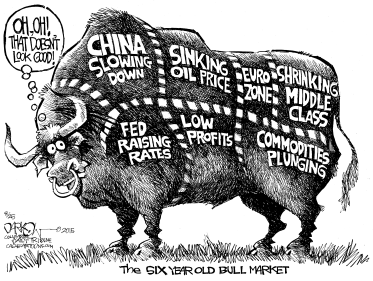The New York Stock Exchange plummeted, causing many banks and businesses to file bankruptcy. For example, many cite the September 1929 passage of the Smoot-Hawley Tariff Act, which placed high taxes on many imported items, as a major contributor to the market’s instability. In early 2000, the technology stock bubble crashed spectacularly as the Nasdaq plunged from 5,000 to nearly 1,000 by 2002 and the U.S. economy was hurled into a recession. Last year, Lombard Street Research’s Dario Perkins compared the effect on GDP from both the dot-com stock market crash of 2000 and the sub-prime-mortgage crisis of 2007-2008. The results show a temporary increase in the population average of expectations and uncertainty right after the crash. By then, production had already declined and unemployment had risen, leaving stocks in great excess of their real value. A number of studies have investigated the causes and effects of stock market crashes.
It would take 27 years for the stock market to recover and surpass its pre-crash level. The second time was September 14, 2000, with the S&P 500 at 1,480.87. Over the following 2 years, the S&P 500 declined 47.55{bf6128eaee7daf804a40e739f155a69f2d5a72ca2bacccc9954495bcd60bdcac} to 776.76 – its second largest medium-term percentage decline since the Great Depression. The measurement strategy makes use of the fact that the respondents of HRS-2008 answered the survey during twelve months from February 2008 to February 2009, a time period that includes the time of the stock market crash in early October. A commission was established called the Pecora Commission which would research the reasons for the crash.
That reserve can be put to work by breaking it up into 12 equal parts, and investing one part of it per month once it looks like the crash is over. In this paper, we study this issue by using data for eight major stock market crashes that have taken place during the December 31, 1962-December 31, 2007 period with a large sample of US firms. It is important to remember that this was a time of massive general deflation when all prices declined, so it is not surprising that the market also shared this phenomenon. You’ll get the same return as when you bought the bonds, regardless of what the stock or bond market does.
Subjective crash probabilities tended to rise following an increase in the number of recent news-media uses of the word crash” or other words indicating severe market losses. From the record close on 03.09.1929 (= 381.17 points), the DJIA© had already lost 47.87{bf6128eaee7daf804a40e739f155a69f2d5a72ca2bacccc9954495bcd60bdcac} on this interim bottom in November 1929. As an investment analyst for other websites and private clients, I watch the market daily and hear every fearful quip about a new correction or full-on stock market crash. This method prevents you from trying to pick the exact bottom of a crash, while purchasing stocks at a good average share price ahead of a market rebound. While you are trying to avoid the carnage that may never come, you will invariably miss out on great opportunities. These results show that actual stockholding status is more strongly related to the effect of the stock market crash on expectations than whether one follows the stock market.
With that detailed explanation of the chart out of the way, let’s consider what happened in the market during the last 15 months. The crash was followed by a devastating worldwide depression that lasted until the Second World War. Table B1. Stock returns assumed to be distributed Student-t with 3 degrees of freedom.